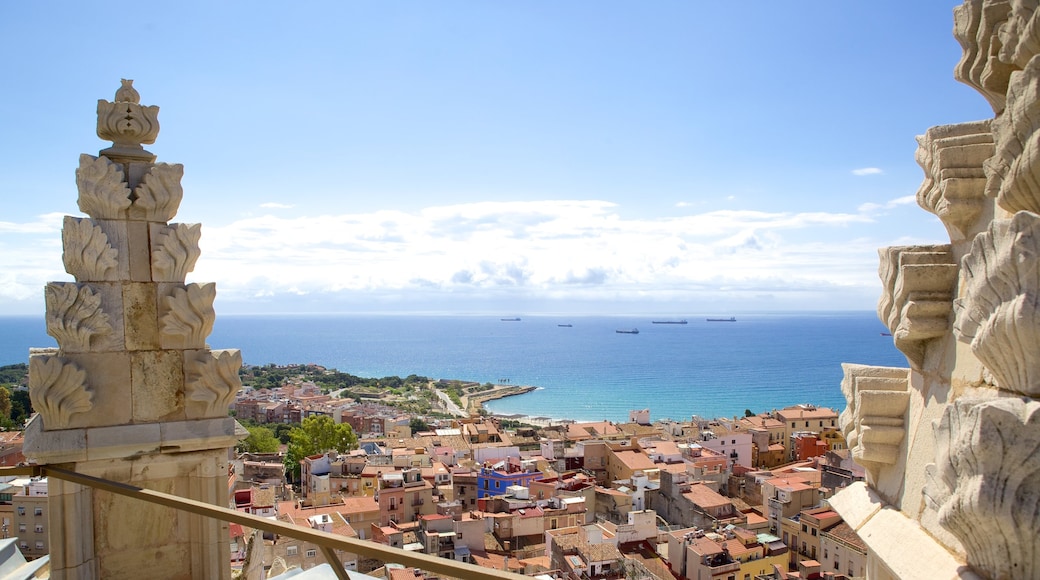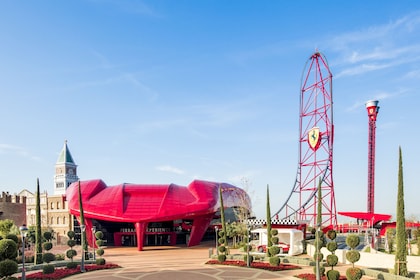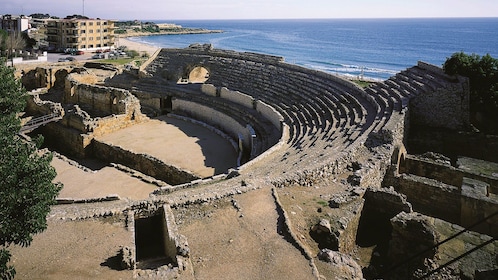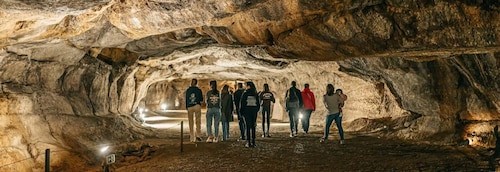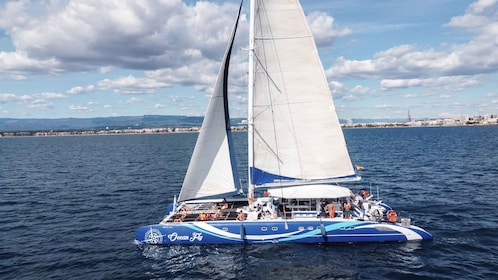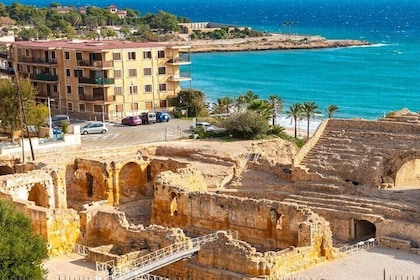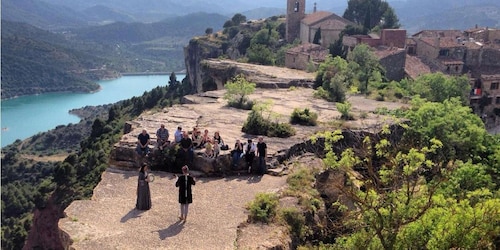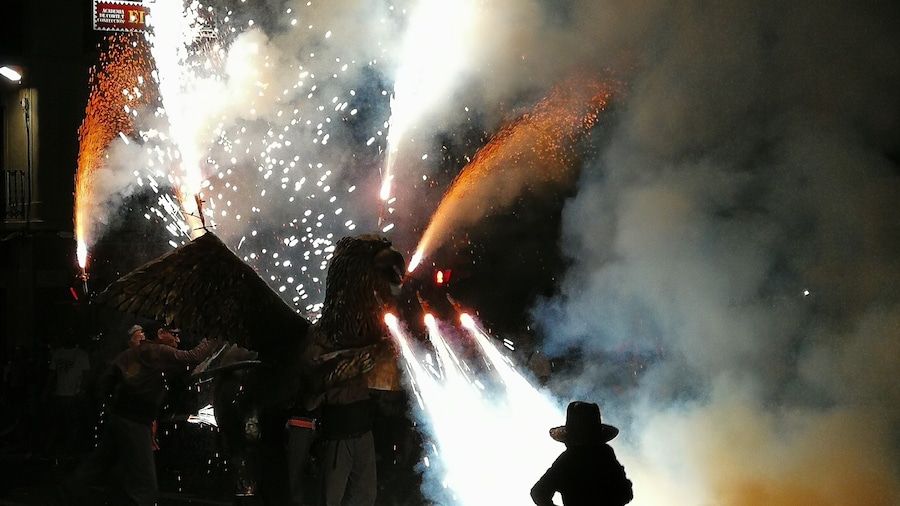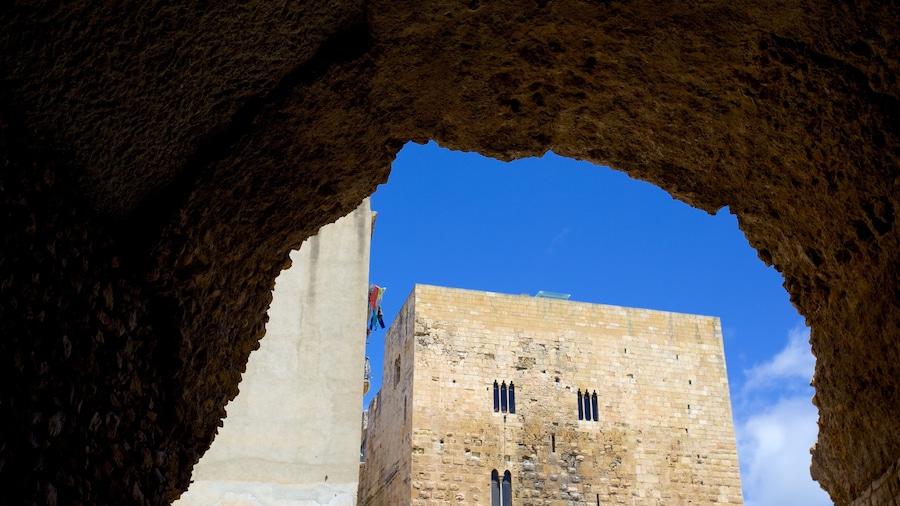Set high on a hill overlooking the city, this gothic cathedral is home to an outstanding collection of medieval art.
Tarragona Cathedral has been a noticeable part of the city's skyline since the 12th century. The large fortress-like gothic structure stands at the top of the highest point in Tarragona. Inside, discover a vast collection of art that includes altarpieces, paintings, jewelry and tapestries from the 16th century.
Construction of the cathedral began in the late 12th century, on the site of Tarragona’s ancient Roman acropolis. Work on the cathedral ceased when the city was devastated by the Black Death pandemic. The cathedral was eventually consecrated in 1331 and its final design has romanesque touches, reflecting the changes in architectural styles that had occurred since the building work started.
Study the three doors at the front of the church, where the different architectural styles can clearly be seen. The large central door is gothic, while the two smaller doors either side of it are romanesque. Observe the row of statues of apostles and prophets.
Take your time to explore the cathedral’s huge interior. Visit the chapels, including the 14th-century Chapel of the Tailors. See the mausoleum of Juan de Aragon who consecrated the cathedral. One of the artistic highlights of the building is the altarpiece dedicated to St.Tecla, Tarragona’s patron saint. The carving was created in the 15th century and depicts episodes from the saint's life.
Stroll through the arched walkways that surround the cathedral's cloister. Examine the columns and sculpted capitals that feature biblical scenes.
Then go the Diocesan Museum that houses a collection of approximately 6,000 pieces, although they are not all on show at once. Look at ceramics and fragments of mosaics from Roman times. Admire the biblical depictions on 14th and 15th-century altarpieces and appreciate the many tapestries from the 15th to the 17th centuries.


